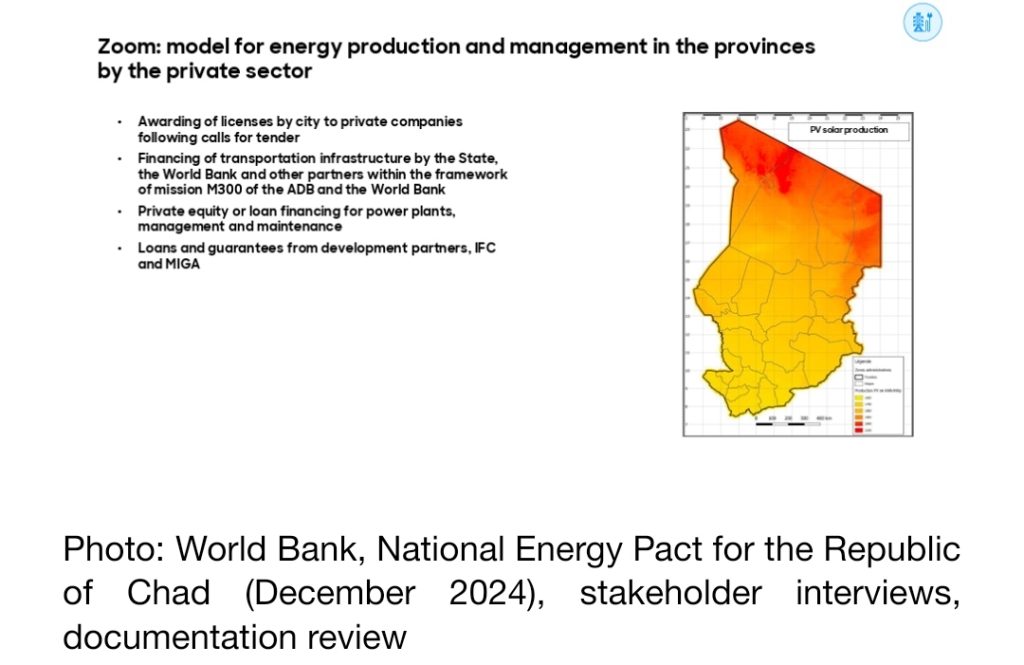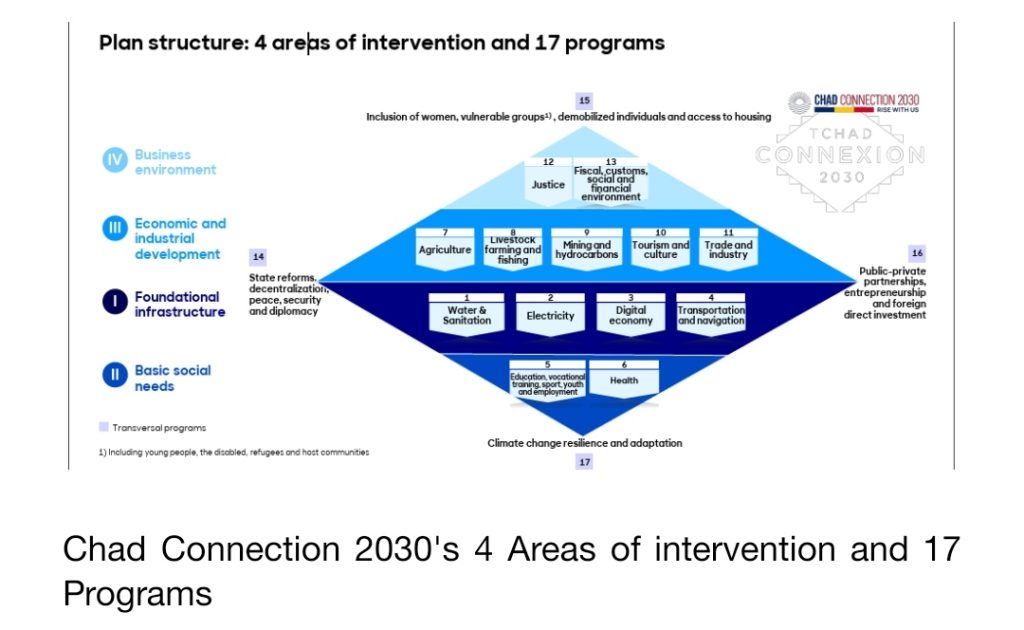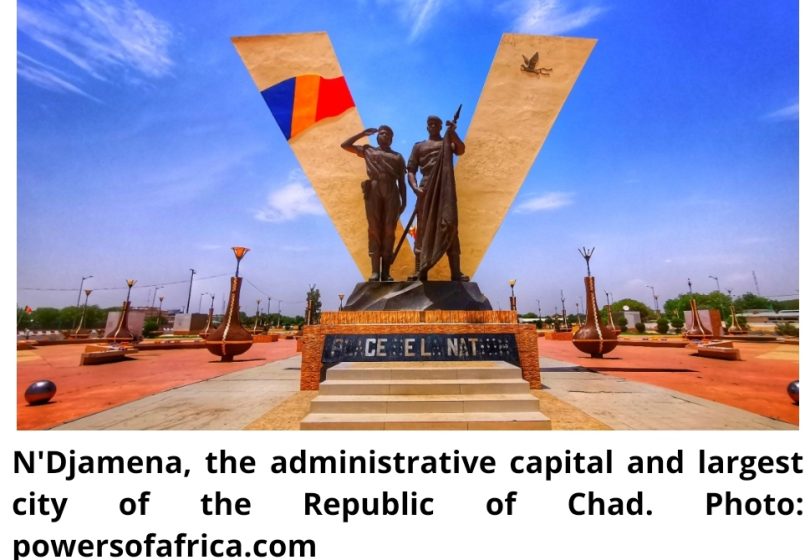The Republic of Chad has set its sights on a historic transformation. With the launch of Chad Connexion 2030, a sweeping new National Development Program, N’Djamena is signaling its intent to move beyond the familiar narrative of fragility and resource dependency and instead craft a path toward inclusive growth, modern governance, and economic diversification.
It is, in the words of President Mahamat Idriss Deby Itno, an attempt to position Chad as “a center of growth and innovation in Central Africa and the Sahel.”
At its core, the plan seeks to mobilize an extraordinary $30 billion in investment over the next six years. This is no minor ambition in a country where oil revenues remain volatile, infrastructure gaps remain vast, and the social contract between state and citizen has long been under strain. Yet by pairing large-scale infrastructure programs with institutional reforms and a new openness to private capital, the government is staking its future on a high-risk, high-reward wager: that Chad can leapfrog into a new era of growth and resilience before the end of this decade.

The Architecture of Chad Connexion 2030
The plan is built around four main pillars that interlock rather than operate in silos:
- Infrastructure: From electricity to water, roads to broadband, the strategy aims to lay the material foundations for growth.
- Social Policy: A deliberate strengthening of health, education, and employment systems, with a focus on inclusion.
- Diversification: Moving beyond oil toward agriculture, mining, tourism, and export-oriented industries.
- Business Climate: Sweeping reforms to attract investment and reduce the friction of doing business.
These four pillars are underpinned by 17 thematic programs, some of which are cross-cutting, such as decentralization, climate resilience, and women’s empowerment. In practice, the government envisions 268 multisectoral projects and reforms, each designed to generate structural shifts in the economy and society.
Digital Transformation as a Catalyst
If there is a crown jewel in Chad Connexion 2030, it is undoubtedly the digital investment program: $1.5 billion dedicated to modernizing the country’s connectivity and positioning Chad as a digital hub for the Sahel. Known as Program 3 in the strategy document, this initiative recognizes that without a digital leap, Chad’s broader ambitions will remain hobbled.
Key goals include:
- Expanding coverage: Internet penetration stood at just 13.2% in early 2025. The government has set a target of 30% by 2030.
- Boosting infrastructure: The construction of a 509-kilometre fiber link from N’Djamena to the Nigerien border is central, alongside plans for new international routes through Libya and Egypt.
- Encouraging competition: The privatization of state-owned Sotel and the licensing of a third telecom operator are expected to reduce consumer costs and stimulate innovation.
- Digitizing government: From tax filings to court processes, Chad aims to build an e-government ecosystem that reduces inefficiency and corruption.
The digital roadmap, however, is striking in what it omits: cybersecurity. As Africa experiences an exponential rise in web threats (with 131.5 million incidents reported in 2024 alone, according to Kaspersky), the absence of a dedicated cybersecurity strategy poses significant risks. Digitization without defense could expose Chad to vulnerabilities that undermine the very progress it seeks.
Ambitious Social Targets
Beyond cables and fiber optics, Chad Connexion 2030 speaks to the lived realities of millions of Chadians. The social dimension is explicit, with measurable targets:
- Electricity access: raise to 90% in urban areas and 60% nationwide by 2030.
- Water security: Clean drinking water for an additional 11 million people.
- Education: A near doubling of primary school enrollment, from 43% to 80%.
- Health: Halving maternal and neonatal mortality rates.
- Employment: Expansion of vocational programs and alignment of training with market needs.
These numbers are not abstract. In a country where two-thirds of the population live below the poverty line and where humanitarian crises are recurrent, achieving even a portion of these goals would represent a profound shift in daily life.
Economic Diversification: Breaking the Oil Dependency
For decades, Chad’s economy has been tethered to oil, which has been a blessing in terms of revenue but a curse in terms of volatility. With Chad Connexion 2030, the government aims to revamp the economy through agriculture, mining, and tourism, each sector selected for its potential multiplier effects.
- Agriculture: The plan aims to double production within six years, a move that could enhance food security and create export surpluses.
- Mining: With untapped reserves of gold and other minerals, Chad is courting foreign investors to establish a modern, regulated mining sector.
- Tourism: From the Zakouma National Park to the Saharan landscapes, Chad’s natural and cultural assets are being positioned as future revenue drivers, contingent on security improvements.
The challenge here will not be identifying opportunities, but rather ensuring governance structures prevent the familiar curse of resource mismanagement.
The Business Climate and Private Sector Role
Perhaps the most radical aspect of Chad Connexion 2030 is its stance on the private sector. Nearly 46% of the projects are designed to be financed by private capital, and the government has made clear that private partners will not merely be financiers but also managers and risk-takers.
This reflects a deliberate strategy: reposition the state as regulator and enabler, while empowering entrepreneurs and investors to drive execution. Reforms to tax systems, customs procedures, labor law, and residency rules for foreign talent are all part of this agenda.
Yet the burden of proof lies with N’Djamena. Investors will want assurances of transparency, rule of law, and political stability.
The Abu Dhabi Round Table: Securing Buy-In
Central to the rollout is the Partners’ Round Table in Abu Dhabi which is billed to take place in November 2025. It is convened to rally international financial institutions and private investors around Chad’s vision. With more than half of the $30 billion envelope (roughly $16 billion) expected from private actors, this meeting is not merely diplomatic theatre.
It is a test of credibility. Chad, in this summit, aims to demonstrate that the strategy is not just aspirational prose, but a framework supported by governance reforms, competent delivery structures, and debt sustainability. The government insists that the plan is designed to maintain a sustainable debt-to-gross domestic product ratio, with a dedicated Delivery Unit to coordinate project execution across ministries.
Risks and Blind Spots
No development strategy is immune to risks, and Chad Connexion 2030 is no exception. Among the most pressing:
- Security Environment: Chad remains a frontline state in the Sahel’s counterterrorism struggle. Instability could derail both investor confidence and project implementation.
- Institutional Capacity: Ambition is one thing, execution another. Weak state institutions may struggle to deliver projects on time and at scale.
- Climate Change: With rising desertification and water scarcity, environmental shocks could undermine both agriculture and urban resilience.
- Cybersecurity: As noted, the digital program risks creating new vulnerabilities in the absence of a clear defense framework.
- Debt Management: While the government insists on sustainability, the sheer scale of borrowing and private commitments introduces exposure to external shocks.
A Visionary Gamble
President Mahamat Idriss Deby Itno has cast Chad Connexion 2030, as nothing less than the foundation for a “modern, accessible, open, competitive, and attractive Chad.” This rhetoric designed to inspire, but also to reassure potential partners that Chad has turned a page.

The stakes are high. Achieving an average annual GDP growth rate of 8% between 2025 and 2030 would represent one of the fastest growth trajectories on the continent. More importantly, if the social indicators improve as projected, millions of Chadians could see tangible changes in their quality of life.
Yet the gamble is stark. A failure to deliver would not just squander billions but could deepen disillusionment among citizens and investors alike. Success, however, would redraw the economic map of the Sahel and position Chad as a new node of resilience in a region often associated with fragility.
Conclusion
Chad Connexion 2030, is more than a development plan. It is an attempt to reimagine the country’s identity, moving from a landlocked to a digitally connected, from resource-dependent to diversified, and from aid-reliant to investment-driven.
It is ambitious, perhaps audacious, but in many ways, ambition is precisely what Chad needs. Incrementalism will not suffice in a context where the development gap is so wide and the clock so urgent.
The coming years will determine whether this vision becomes a landmark case of African transformation or yet another unrealized blueprint. What is certain is that Chad has placed its cards on the table, signaling to its people and to the world that the country intends to write a different story for itself by 2030.
Written by Olivier Noudjlbaye Dedingar, USA/UN Correspondent.








